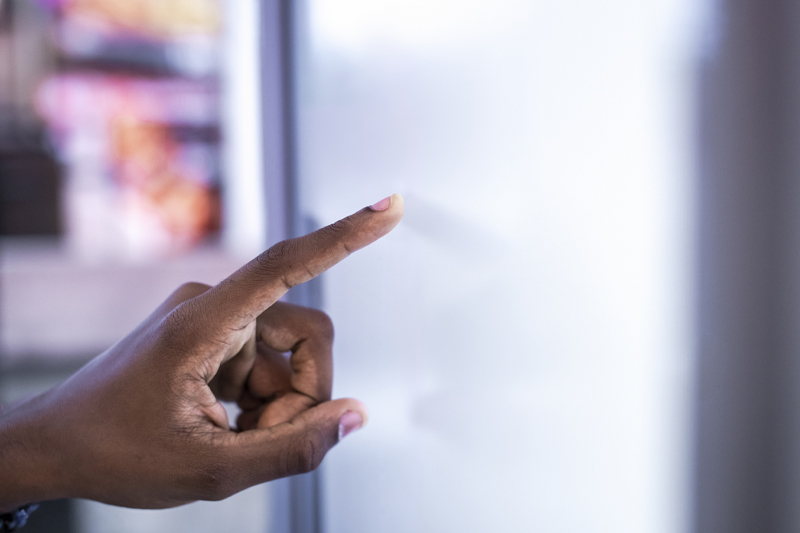At one point in time, the idea of a self-guided restaurant experience only seemed appropriate at fast-food chains. The experience of sitting down, ordering, and eating your meal while being waited on seemed like it would be too complicated to execute without a server. But, as technology has progressed, the idea of self-ordering at restaurants is becoming more and more prevalent.
For customers, self-ordering can be a great way to get your food faster and with less hassle. And for restaurants, self-ordering kiosks can help to reduce labor costs. But, there are a few things you should know about self-ordering before diving in headfirst.
Here’s what you need to know about self-ordering at restaurants!
The Pros of Self-Ordering

Faster Service
One of the most significant advantages of self-ordering is that it can help to speed up the service. Customers can input their orders and pay for their meals without waiting for a server. This can be especially beneficial during busy times when restaurants are short-staffed or when there is a long line. Your restaurant can fulfill more tickets and keep more customers fed and happy without increasing your waitstaff or operations.
Reduced Operating Costs
Another major advantage of self-ordering is that it can help to reduce your restaurant’s operating costs. If you’re using a fully-automated system, you won’t need to pay for servers or cashiers. You may also see a reduction in food costs. Customers are less likely to order items they don’t want when they have to input the order themselves. This is because customers are more mindful of their choices when selecting and paying for them individually.
Increased Accuracy
Self-ordering can also help increase accuracy as customers are less likely to make mistakes when inputting their orders. This can lead to fewer frustrated customers and less food waste.
The Cons of Self-Ordering
Loss of Human Interaction
One of the biggest disadvantages of self-ordering is that it can lead to a loss of human interaction. This may be a big turnoff for some customers who prefer the traditional restaurant experience. However, the events of the last few years have made this type of experience more palatable (no pun intended) for more customers. With the rise of COVID-19, many customers are now more comfortable with self-ordering and contactless payments to minimize their exposure to others.
It’s important to remember that you can still provide excellent customer service even if you’re using self-ordering kiosks. Train your staff to be available to answer questions and help customers with the ordering process. You can also use your kiosks to promote your brand and provide an engaging customer experience.
Technical Difficulties

Another disadvantage of self-ordering is that it can sometimes be challenging to execute technologically. If your kiosks are down, you won’t be able to take orders. And, if your ordering system is complicated or confusing, customers may become frustrated and give up.
Make sure that you test your self-ordering system thoroughly before rolling it out to customers. And be sure to have a backup plan in place in case of technical difficulties. You may want to consider using a hybrid system that includes self-ordering kiosks and traditional servers. You can still take orders even if your kiosks are down.
Decreased tips
While self-ordering can help reduce labor costs, it may also lead to a decrease in tips. Customers may be less likely to tip when ordering from a machine instead of a human server. To offset this, you may consider adding a tip line to your self-ordering system. You can also make sure that your staff provides excellent customer service to encourage customers to leave a tip.
Whether you’re considering self-ordering for the first time or looking to improve your existing system, it’s crucial to weigh the pros and cons. Self-ordering can have many advantages, but there are also some potential disadvantages that you should be aware of before choosing. By considering both the positives and the negatives, you can make the best decision for your restaurant.
Is Self-Ordering Right for Your Restaurant?
Now that you know the pros and cons of self-ordering, you may be wondering if it’s the right choice for your restaurant. The answer will depend on many factors, including your budget, your target market, and your overall business goals.
If you’re looking to reduce labor costs, self-ordering may be a good option. But, if you’re worried about the loss of human interaction, you may want to stick with traditional servers. Think about your goals for your business and what would work best for your customers. Then, you can decide whether self-ordering is right for you. Drawbacks like technical difficulties and downtime at kiosks can be offset by choosing the proper hardware before starting.
You’ll want to work with a trusted POS hardware partner to make sure you’re getting the best technology for your needs—and that it will work well with your current POS system.
Do you want to learn more about self-ordering and how it can benefit your restaurant? We’d love to chat. Contact our experts here and get started on your path to a truly modern dining experience.



